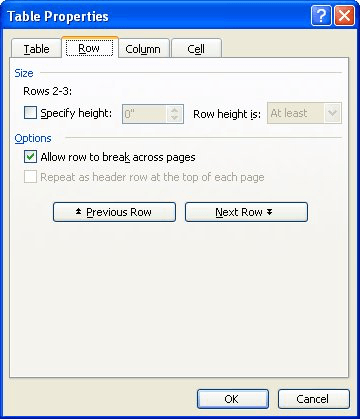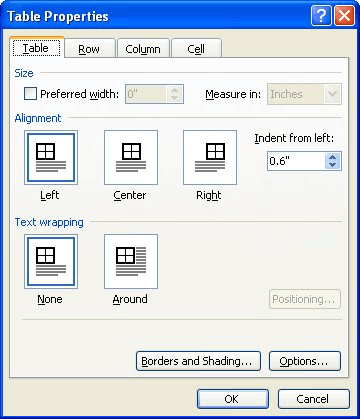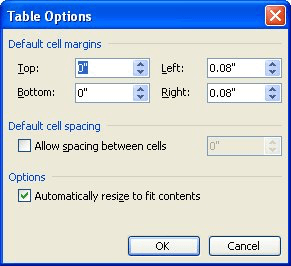Please Note: This article is written for users of the following Microsoft Word versions: 97, 2000, 2002, and 2003. If you are using a later version (Word 2007 or later), this tip may not work for you. For a version of this tip written specifically for later versions of Word, click here: Freezing a Table.
Written by Allen Wyatt (last updated February 5, 2022)
This tip applies to Word 97, 2000, 2002, and 2003
Word allows you to easily create tables, modify them, and place data in them. Word can even automatically adjust the dimensions of cells in your table to reflect the data that is in them. There may be times, however, when you want to "freeze" the size of cells in a table. For instance, you might want the cells to be a certain size, and never change—even when you place a large amount of data in the cell.
The first step is to adjust column width so that the columns in your table are the way you want them. Then, follow these steps if you are using Word 97:
If you are using Word 2000 or later, the process is slightly different:

Figure 1. The Row tab of the Table Properties dialog box.

Figure 2. The Table tab of the Table Properties dialog box.

Figure 3. The Table Options dialog box.
These last steps (5 through 9) are particularly important. If you don't clear the Automatically Resize to Fit Contents check box, Word can and will readjust the column width to display the most data possible in the table.
WordTips is your source for cost-effective Microsoft Word training. (Microsoft Word is the most popular word processing software in the world.) This tip (1605) applies to Microsoft Word 97, 2000, 2002, and 2003. You can find a version of this tip for the ribbon interface of Word (Word 2007 and later) here: Freezing a Table.

Learning Made Easy! Quickly teach yourself how to format, publish, and share your content using Word 2021 or Microsoft 365. With Step by Step, you set the pace, building and practicing the skills you need, just when you need them! Check out Microsoft Word Step by Step today!
Want to move a row in a table very easily? You can do so by using the same editing techniques you are already using.
Discover MoreWhen you get a text file from a program other than Word, tabular information may be formatted with nothing but spaces in ...
Discover MoreFor those times when you remove the borders from your tables, Word provides a way that you can display non-printing ...
Discover MoreFREE SERVICE: Get tips like this every week in WordTips, a free productivity newsletter. Enter your address and click "Subscribe."
There are currently no comments for this tip. (Be the first to leave your comment—just use the simple form above!)
Got a version of Word that uses the menu interface (Word 97, Word 2000, Word 2002, or Word 2003)? This site is for you! If you use a later version of Word, visit our WordTips site focusing on the ribbon interface.
Visit the WordTips channel on YouTube
FREE SERVICE: Get tips like this every week in WordTips, a free productivity newsletter. Enter your address and click "Subscribe."
Copyright © 2025 Sharon Parq Associates, Inc.
Comments